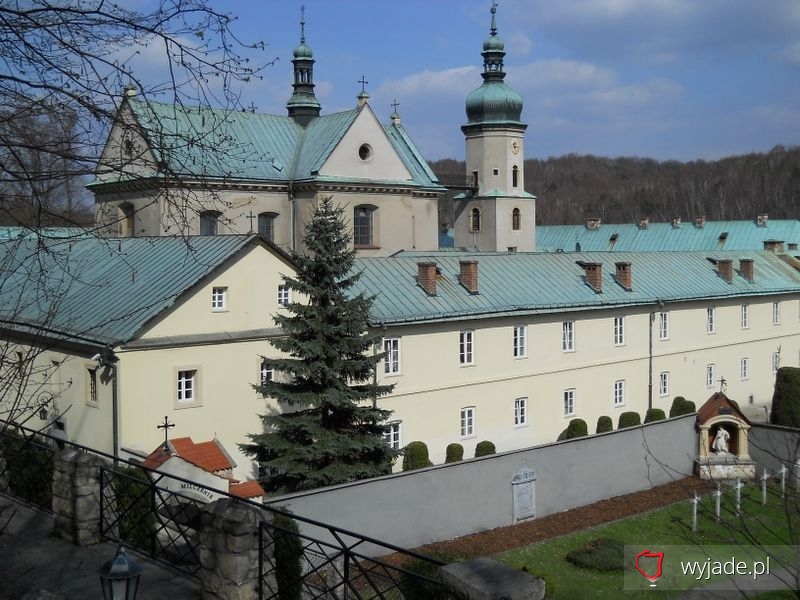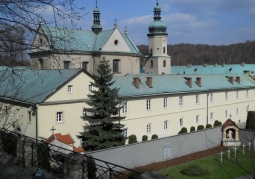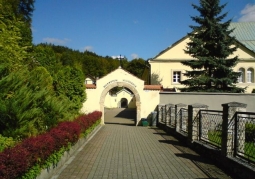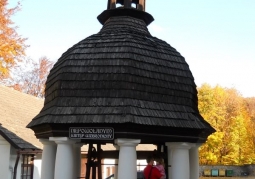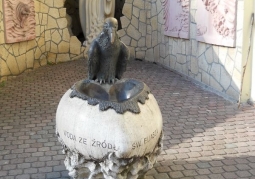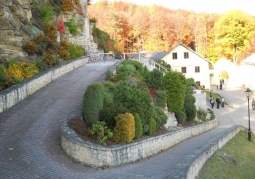Monastery of Discalced Carmelites - Czerna
No weather data
5.0 /5
Number of ratings: 11
Address: Czerna 79 , 32-065 Czerna
Lost among the gorges and beech forest Czerna, just like centuries ago, has the character of a hermitage isolated from the world. It is surrounded by almost eighty hectares of forest covering the monastery hill and the neighboring hill, located on the eastern side, behind the Eliaszówka river. Both hills are the so-called the great papal enclosure, wrapped over a four-kilometer stone wall. Within it there were twelve separate hermit houses with chapels. The monastery located on the southwestern slope is surrounded by a wall called The Carmelites are a hermit order founded in the 12th century on Mount Carmel. One of its branches, with a stricter rule, approved in 1593, are the Discalced Carmelites. They came to Poland at the beginning of the 17th century and soon after the Krakow voivode, Agnieszka née Tęczyński, Firlejów, founded a church and monastery for them in Czerna, and gave the Carmelites the nearby crowbars of Dębnik marble. The church, along with one monastery wing, was built in the years 1631-1640, and the construction of the monastery was completed in the next few years. The walls surrounding the foundation were built until the 1770s. The monastery complex was extremely original laid out: a church in the form of a cross was inscribed in the quadrangle of the monastery buildings. The monastery consists of four wings on a plan of a regular quadrangle measuring seventy seven by seventy meters. The church in the middle is connected with the monastery wings through the buildings located on the extension of his arms. In the corner spaces between the arms of the church and the wings of the monastery, closes are planned. Church St. Elijah has a short presbytery, behind which there is a religious choir and an octagonal tower. The church is covered by barrel vaults and barrel vaults with lunettes, and at the intersection of the nave and transept - crucifix. Part of the interior furnishings of the temple and monastery and some architectural details are made of black Dębnik marble. In addition to the portals, it is a marble, baroque high altar with a picture of an Angel feeding Elijah, painted by Tomasz Dolabella, court painter of King Władysław IV. The altar also has a baroque tabernacle made of black and pink marble.
Nearby places
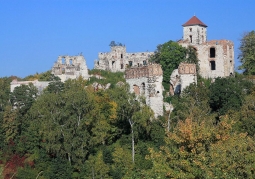
Tenczyn Castle Ruins - Rudno
Category: LocksThe ruins of the Tenczyn castle in Rudno, also often called the ruins in Tenczyn. It is one of the more majestic defensive structures located in Lesser Poland. The beautiful surroundings in which the ruins are and the...
9 km
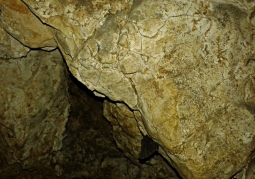
Cave on the Source - Dolinki Krakowskie Landscape Park
Category: Caves and rock formsThe hole of the cave is located near the Bedbeck Fountain, it has the character of a narrow crevice that widens in a 9-meter deep well. A multi-level maze of corridors formed on vertical cracks widened by the water that...
9 km
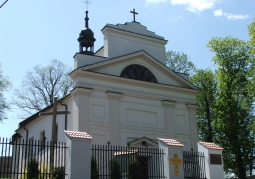
The church Bartholomew the Apostle - Jerzmanowice
Category: ChurchesThe church was originally wooden, built during the reign of Casimir the Great in 1338. The current building dates from 1827–1830, was extended in 1876 and serves as a Roman Catholic parish church. We learn from...
10 km
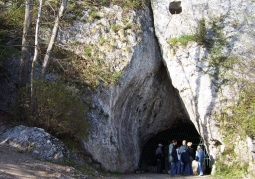
Bat Cave - Dolinki Krakowskie Landscape Park
Category: Caves and rock formsThe name of the cave comes from the rich fossil remains found and living bat species today. Colloquially also called the White Cave, due to its limestone structure. The Nieboperzowa Cave is located in the group of rocks...
11 km
Phone
12 282 00 65
Nearby places

Tenczyn Castle Ruins - Rudno
Category: LocksThe ruins of the Tenczyn castle in Rudno, also often called the ruins in Tenczyn. It is one of the more majestic defensive structures located in Lesser Poland. The beautiful surroundings in which the ruins are and the...
9 km

Cave on the Source - Dolinki Krakowskie Landscape Park
Category: Caves and rock formsThe hole of the cave is located near the Bedbeck Fountain, it has the character of a narrow crevice that widens in a 9-meter deep well. A multi-level maze of corridors formed on vertical cracks widened by the water that...
9 km

The church Bartholomew the Apostle - Jerzmanowice
Category: ChurchesThe church was originally wooden, built during the reign of Casimir the Great in 1338. The current building dates from 1827–1830, was extended in 1876 and serves as a Roman Catholic parish church. We learn from...
10 km

Bat Cave - Dolinki Krakowskie Landscape Park
Category: Caves and rock formsThe name of the cave comes from the rich fossil remains found and living bat species today. Colloquially also called the White Cave, due to its limestone structure. The Nieboperzowa Cave is located in the group of rocks...
11 km
